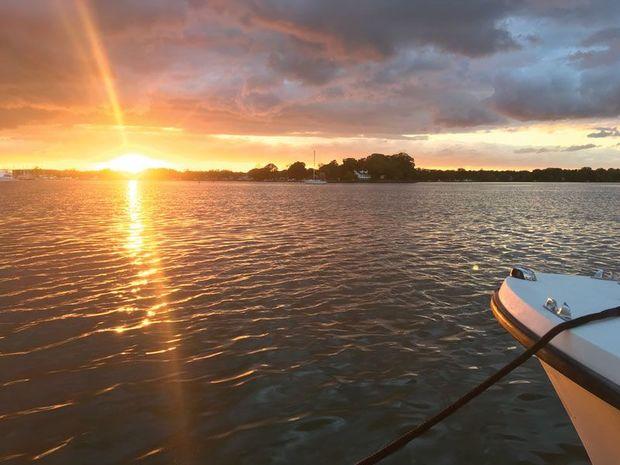Those of us who keep boating late into autumn know that it is a special time of year on the water. The heat and humidity are gone, the sky is deep blue, the foliage (or what’s left of it) is beautiful, and the water is less crowded. We soak up our good fortune to live in a region that has a long boating season, especially this year when the temperatures stayed summer-like well into October.

But by mid-November the days are much shorter, nights much cooler, and the water temperatures much lower. If you love late fall boating as we do, keep these tips in mind.
- File a float plan with a friend or family member. Include where you are going, when you plan to return, and who’s on the boat.
- Wear your life jacket. This isn’t about whether you can swim. It’s about the life-threatening physiological changes caused by cold water immersion. A life jacket will help keep your head above water until you can get your breathing under control. And it will help keep you warm. Attach a whistle to that jacket, and you’ve got a way to make yourself heard without expending a lot of energy.
- In addition to all the other U.S. Coast Guard recommended safety equipment, make sure you have flares aboard. With fewer boats out there and more hours of darkness, you may need the flash and boom.
- Layer clothing, or wear a wet or dry suit. Tuck pocket warmers in your jacket.
- Stow a change of clothes and a towel in a watertight bag.
- Bring a thermos with a warm beverage or soup.
- Have a VHF radio onboard. Fewer people are on the water at this time of year, making it more difficult to flag down someone for help. This may be the right time to invest in an EPIRB or AIS.
 But by mid-November the days are much shorter, nights much cooler, and the water temperatures much lower. If you love late fall boating as we do, keep these tips in mind.
But by mid-November the days are much shorter, nights much cooler, and the water temperatures much lower. If you love late fall boating as we do, keep these tips in mind.